
Check out this source for instructions on how to create crazy pasta sculptures that look like twisty and bendy pieces of art!
- Subject:
- Arts Education
- Visual Arts
- Material Type:
- Activity/Lab
- Date Added:
- 03/08/2021

Check out this source for instructions on how to create crazy pasta sculptures that look like twisty and bendy pieces of art!
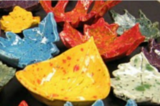
Learn how to make leaf bowls with air drying clay, fired clay, or even salt dough.
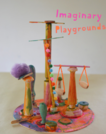
In this lesson, students use wooden parts and pieces to create imaginary playgrounds. This is a great activity for grade 2 and 3 students; if "moving parts" are incorporated, this could also be a great "Kinetic Sculpture" activity for grade 4 Arts Education students.

In this activity, kids get creative by cutting cardboard into various shapes, then stacking it. The final step of pouring paint over their creations is definitely the icing on the cake!
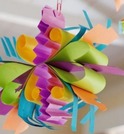
In this fun activity, students experiment with manipulating paper to create different shapes and effects. They also learn about (and practice creating) symmetry!
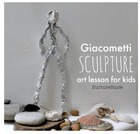
In this art lesson, children learn about the sculptor Alberto Giacometti, then have fun with a quick human figure sketching activity, finally creating foil sculptures of people.
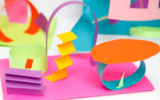
Students create sculptures by manipulating colourful papers.

This art history video discussion looks at "The Seated Scribe"‰غ_ c. 2620-2500 B.C.E., c. 4th Dynasty, Old Kingdom, painted limestone with rock crystal, magnesite, and copper/arsenic inlay for the eyes and wood for the nipples, found in Saqqara (Musee du Louvre, Paris).

This is the first lesson in a sequential unit. Students consider the ways that sculptors have represented concepts and ideals as symbolic forms in three dimensions. They compare historical examples to those in contemporary culture, and begin sketching designs for their own symbolic sculpture.

This lesson is part of a sequential unit. Students use criteria developed in class to evaluate which of their own sketches would make the best symbolic sculpture. They choose a final design, techniques and materials, and create sculptures based on their designs.

This lesson is part of a sequential unit. Students participate in a class critique of the symbolic sculptures they created. They critique the work of their peers by responding to questions about the symbolic content and applying criteria for sculpture developed in Lesson 1.

This art history video discussion looks at Claus Sluter's (with Claus de Werve) "The Well of Moses", 1395-1405 (calvary finished 1399, prophets 1402-05, painted by Jean Malouel c. 1402), Asniج¬res stone with gilding and polychromy, slightly less than 7 meters high, originally close to 13 meters with cross. Located on the grounds of the former Chartreuse de Champmol, a Carthusian monastery in Dijon, France established by Philip the Bold, Duke of Burgundy. The prophets depicted include: Moses, David, Jeremiah, Zachariah, Daniel, and Isaiah.

This art history video discussion looks at Thutmose's "Model Bust of Queen Nefertiti", New Kingdom, 18th dynasty, c. 1340 BCE, limestone and plaster (Egyptian Museum and Papyrus Collection/Neues Museum, Berlin).

This art history video features a conversation between Dr. Elizabeth Macaulay-Lewis and Dr. Steven Zucker in front of "Two Royal Figures," Iran (Saljuq period), mid 11th - mid 12th c., painted and gilded stucco (Metropolitan Museum of Art).

This site houses a collection of ready to go resources including:
*tools
*templates
*visual
*recall
*no technology
Find slides at ditch.link/cabinetlinks

Students will analyze the sculpture "Head with Horns" by Paul Gauguin through objective and subjective writing activities and class discussion. They will then consider the meaning of this sculpture and examine the differences between objective and subjective analysis.